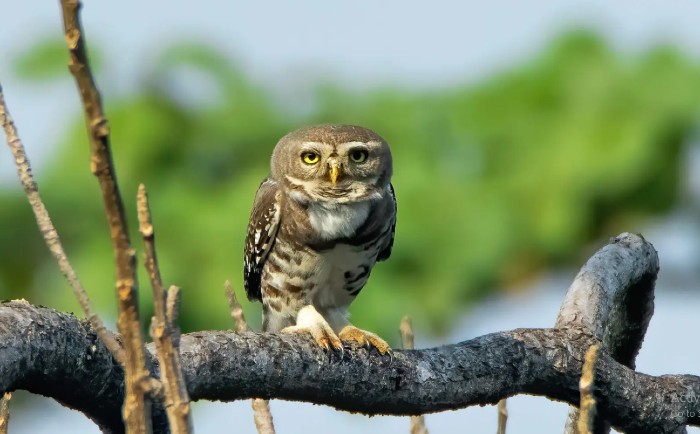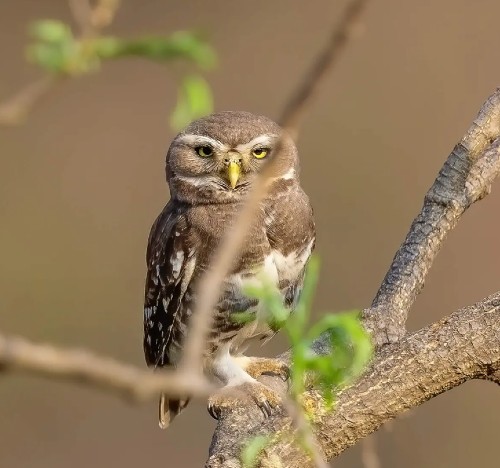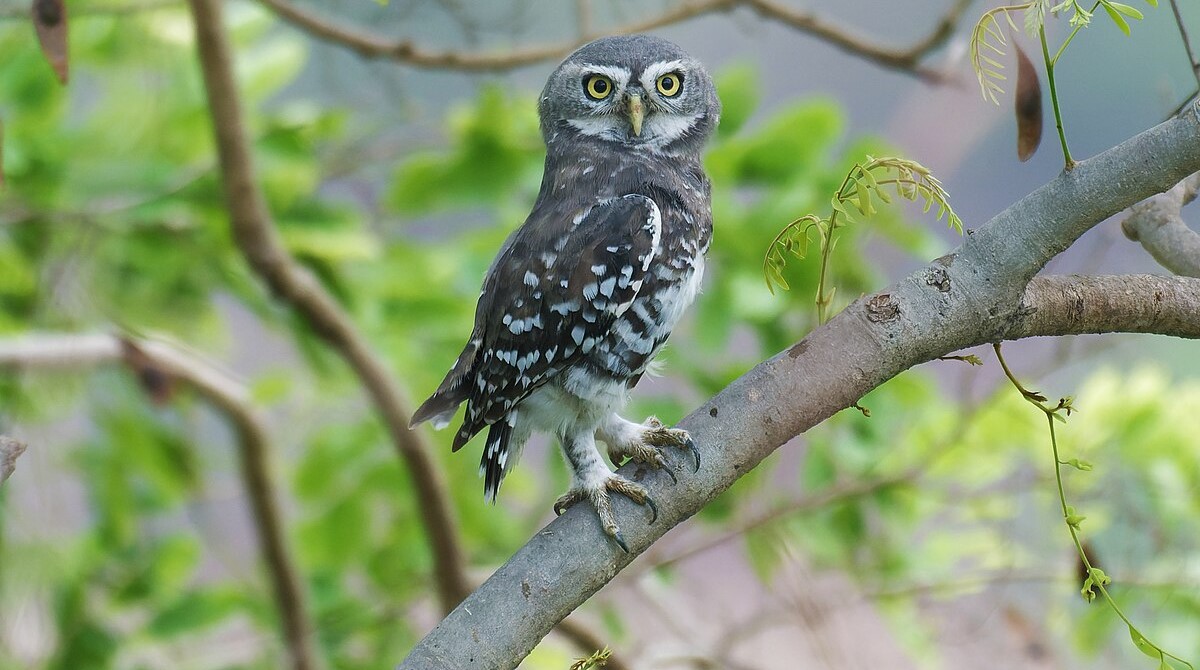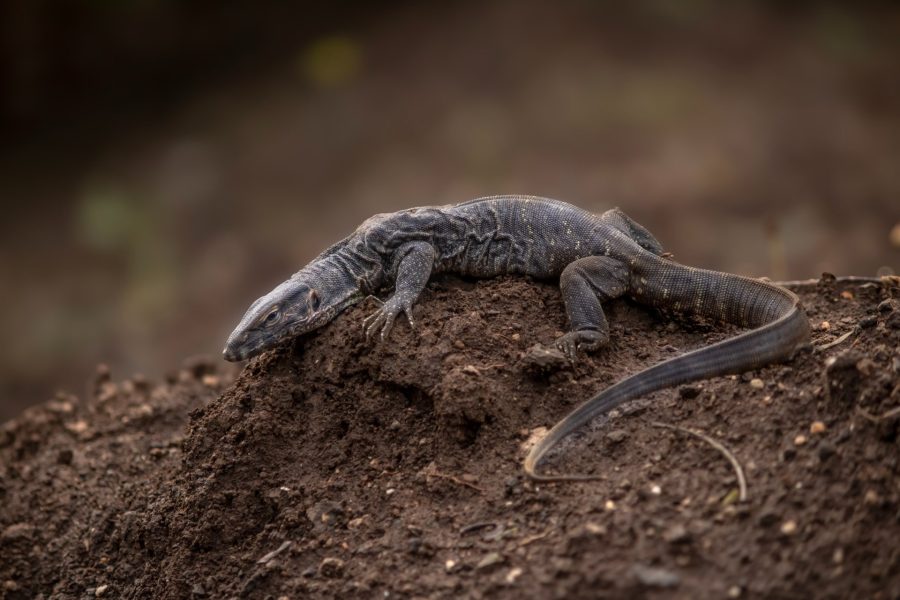Often embodying a blend of wisdom and mystery, owls have carved a distinctive role for themselves throughout history. From being revered as the sacred bird of Athena in Greek mythology to endearing characters in modern media and pop culture, these nocturnal raptors have captivated human imagination with their enigmatic presence.

India’s diverse landscape is home to around 36 species of owls, and all are protected under the Wildlife (Protection) Act of 1972. Due to a demand driven by superstitious beliefs, occult practices and mystical allure, 16 out of these species are most commonly found in illegal wildlife trade rackets. These include species such as the rock eagle owl, barn owl, spotted owlet, and jungle owlet among others.

Notably, the IUCN Red List categorises the forest owlet as ’Endangered’, and this is the only owl species listed in Schedule I of the Wildlife (Protection) Act, 1972. This International Owl Awareness Day, let’s get to know the lesser-known hooters of the wild — the forest owlet.
History
While we often think of owlets as baby owls, this isn’t true. Some owl species are small in size, which is why they are referred to as owlets. The forest owlet (Heteroglaux blewitti) was discovered in 1872 and is also called Blewitt’s owl after F. R. Blewitt, an Irish officer in India who first identified the species. The miniature owl is endemic to the forests of central India and parts of the Western Ghats. An extremely small population of less than 1,000 mature adults remaining in the wild created an urgency to protect the species and its habitat.

The species was once mistaken to be considered as the spotted owlet, and later, was even thought to have become extinct! It was in 1997, after 113 years of its absence, when the species was miraculously rediscovered by ornithologist Dr. Pamela Rasmussen in the Nandurbar District of Maharashtra. She suggested that perhaps the forest owlet hadn’t ever disappeared at all, but was assumed to have due to its continuing misidentification as the spotted owlet.
Distinctive Features and Behaviour
The diurnal forest owlet is distinguishable by the unspotted brown crown, nape, and back, and its full throat collar. The breast is a uniform dull brown, sharply contrasting with the white on its belly and undertail. Forest owlets feature a pale brown face, offering a softer contrast compared to the more pronounced markings of the spotted owlet. The thickly feathered legs and exceptionally large claws, which help them to capture prey twice their size, add to their distinctive features.
Unlike their predominantly nocturnal relatives, these owlets exhibit their hunting prowess during daylight hours as well, preying on lizards, birds, and rodents with remarkable efficiency. A unique habit of theirs that makes them striking is the lateral flicking of their tail. The forest owlet moves its tail from one side to another, and increases the speed of doing so when it locates and chases its prey.

Habitat Distribution
Among the many species of owls found in India, forest owlets stand out due to their niche habitats. These elusive birds are typically found in open-canopied, isolated fragments of teak-dominated forests. Earlier known to inhabit five central Indian states, forest owlets have currently been sighted only in Maharashtra, Madhya Pradesh, and Gujarat which feature tropical deciduous forests. Though they can be rarely seen, forest owlets have been reported to reside in almost 10 wildlife zones in these states. The Melghat Tiger Reserve in Maharashtra, a vital conservation area, serves as a significant and secure habitat for the species.
Conservation Challenges
The rediscovery of the forest owlet created significant excitement, yet the species is fighting a dire battle for survival due to its specialised habitat requirement. The forest owl is highly adapted to a specific environment, making it particularly sensitive to any changes in its habitat. Habitat destruction due to anthropogenic activities is one of its major existential threats, contributing to the already declining population.
The loss of deciduous forests through illegal logging poses a significant threat to the forest owlet. The species’ reliance on teak trees exacerbates the problem, as illegal tree felling and fuelwood extraction driven by human needs further endanger their habitat. Forest owlet habitats are increasingly fragmented due to expanding agriculture practices, which have led to the disappearance of once-abundant forests.

Deforestation profoundly impacts forest owlets, particularly affecting their breeding habits. In areas where trees are cut indiscriminately, their breeding success is significantly lower. Forest owlets need larger, older trees with cavities to nest. Logging in certain areas, however, affects this nesting, resulting in a loss of such trees. Without suitable cavities, they resort to suboptimal nests, compromising the safety of their eggs and juveniles. Each year, only one or two juveniles emerge from six to seven nests, whereas those spotted owlets sharing the same habitat enjoy a higher survival rate. In addition to the burgeoning problem of deforestation, local people often steal their eggs and chicks for various purposes, including trade, black magic, and gambling.

Taking a Step towards Habitat Conservation
A healthy and holistic environment is crucial for the conservation of species. Habitats play an important role in safeguarding the future of vulnerable species like the forest owlet. These habitats provide essential resources such as food, shelter, and breeding sites, enabling species to thrive and maintain their populations. But due to incessant deforestation, it is imperative to restore these vital ecosystems and reverse the damage.

Wildlife SOS focuses not only on the conservation of wildlife, but also on the environment that supports them. As a step towards habitat conservation, Wildlife SOS has initiated a rewilding project under ‘Rewild for Wildlife’. It is aimed at protecting habitats of coexisting species and restoring ecological processes. The project is implemented in three key locations — Ramdurga in Karnataka, the Elephant Conservation and Care Centre in Mathura and the Agra Bear Rescue Facility in Agra — through the plantation of native species in each location. Each donation to these ongoing projects will directly contribute to planting a tree, protecting vital habitats and revitalising ecosystems. Support ‘Rewild for Wildlife’ and join Wildlife SOS in taking a meaningful step toward a positive environmental impact.





